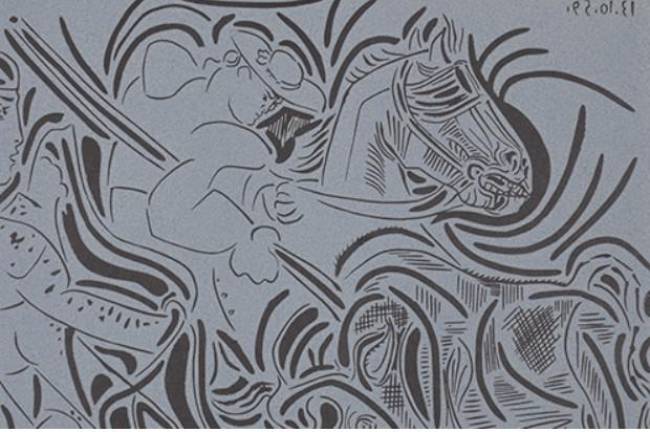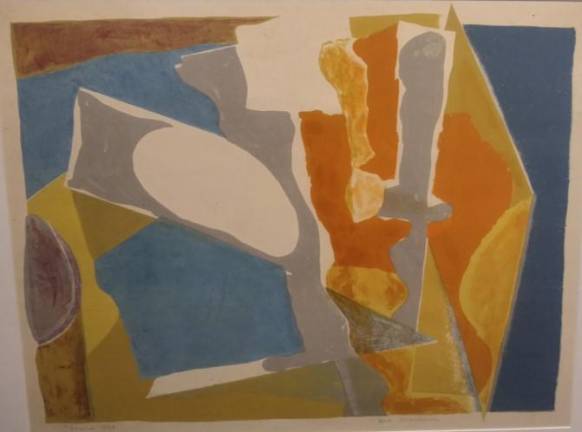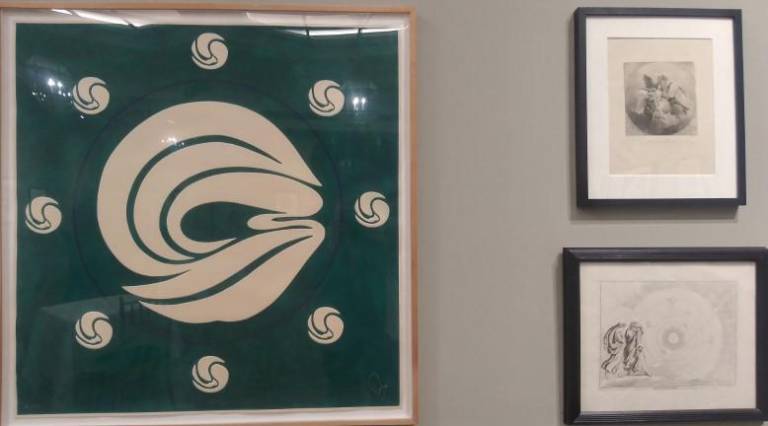Breaking the Mold at the National Arts Club: Old Masters Next to the Moderns
The show now at the NAC features everyone from Old Masters to Moderns and runs through April 3rd.



They’re breaking the mold at the National Arts Club. Its current show, “Prints: From Old Masters to Moderns,” places works by contemporary artists side by side with works by older artists.
That’s by design, says Curator Robert Yahner. The Club, founded in 1898, was formed to showcase works from the period, which was late 19th century/early 20th century landscape painting. “But now,” Yahner points out “’the period’ is now.”
About the collection: The show is another step in the club’s metamorphosis, according to Yahner. “We want to encourage younger artists and more contemporary artists to visit and to join,” says Yahner. As such, he’s planned and staged the show in a way that invites the viewer to compare and contrast. “Besides,” he adds, “Prints are very approachable.” The works on view are pulled from the Club's Permanent Collection, private collections and the’ studios of participating artists. The 46 prints in the show include marquee names from the past – a Whistler and eight Goyas, for instance – with more modern names like Picasso, Miro, and Dali. There’s also a substantial presence by women, as subjects and as contributors, also by design, Yahner says, to mark women’s history month and to encourage younger female artists. Women’s Art History Women appear as subjects throughout the show (especially the eight Goya prints from the Club’s Los Capricho’s collection), and also as contributors, with works by Elizabeth Peyton, Ruth Marten, Mary Frank, and Mariel Escobar. Elizabeth Peyton, known for her jewel-toned celebrity portraits (of Obama, David Bowie, and Princes Harry and William, among other luminaries) features a celebrity of a different sort here. Angel (Magdalene) is a powerful and graphic depiction of the saint in an entirely original way - resolute and powerful instead of regretful and penitent. Although its executed entirely in purple, this Magdalene is no shrinking violet. Here she is a powerful female image emerging triumphant from chaos. All she needs is a sword.
Backstories
Among the contemporary works is a display of three works that at first sight look like mixed media, but are actually backstories of the creative process of major projects by Claes Oldenburg and Christo and Jeanne Claude. Oldenburg’s “Ideas for a War Museum,” is a signed color lithograph with embossing and the artist’s notes; Christo and Jeanne’s two pieces are for a “surrounded Island project forBiscayne Bay. Both are colorful collages that show an artist’s thought process, right down to pink and
yellow fabric swatches for the Christo project. The works themselves have a backstory. “I found this cracked plastic container with a bunch of post it notes with question marks,” Yahner recalls, “And I realized that these were actually signed design ideas for their works.”
Themes
A careful observer will see themes in the arrangements on the walls. On the far wall, for example, a large, vibrant Mandala Green by Jack Youngerman dominates the space. Next to it is an engraving based on Tiepolo’s Venus and Time, made for L’Arte, a famous arts journal of the late 19th century. Beneath it is a line engraving of a Canto of Dante’s Paradiso, with Beatrice showing the poet the various circles of heaven by Bartolomeo Pinelli. “All three have a spherical motif – all based on circles,” Yahner points out. “...and they each have a spiritual theme–the Mandala representing the East, the Tiepolo engraving representing Classic Western mythology, and the Divine comedy image representing Christian imagery.” At the other end of the hall more contemporary artists cover the waterfront from realism to expressionism.
The exuberant “Summer” by Robert Blackburn, a color lithograph on cream woven paper, pops with bright cheerful color that suggest sunshine, a sandy beach and cool clear water. Asking Yahner to pick his favorite is like picking a favorite child, but he cites two Picassos: a very rare print of Picasso’s Salome from 1905 and Picador, a work on loan from the John Szoke Gallery, NYC. The picador was a favorite subject of Picasso’s, since his father often took him to bullfights–in fact, his first painting, made when he was eight, is of a picador he saw at a bullfight with his father.
There’s something for everyone here–modern and classic, impressionism and realism, color and black and white. As the NAC explains on its web site: Since the early sixteenth century, the potential of the print medium was being fully explored by artists and had a decisive impact on the history of art and collecting. Prints provided artists with an outlet for experimentation as well as a sense of freedom to exploit their own interests. Once considered a standard of affordability among collectors, prints and multiples now have the attraction to rival the value of works on canvas in today’s market.”
Visitors will enjoy a visit to this well thought out, concise show which presents an overview of printmaking techniques from Rembrandt to the present day including works by Goya, Tiepolo, Whistler, Picasso, Léger, Oldenburg, Christo, Barnet, Kyle Staver, Elizabeth Peyton and more.
But visitors are advised to act soon. The show closes April 3.